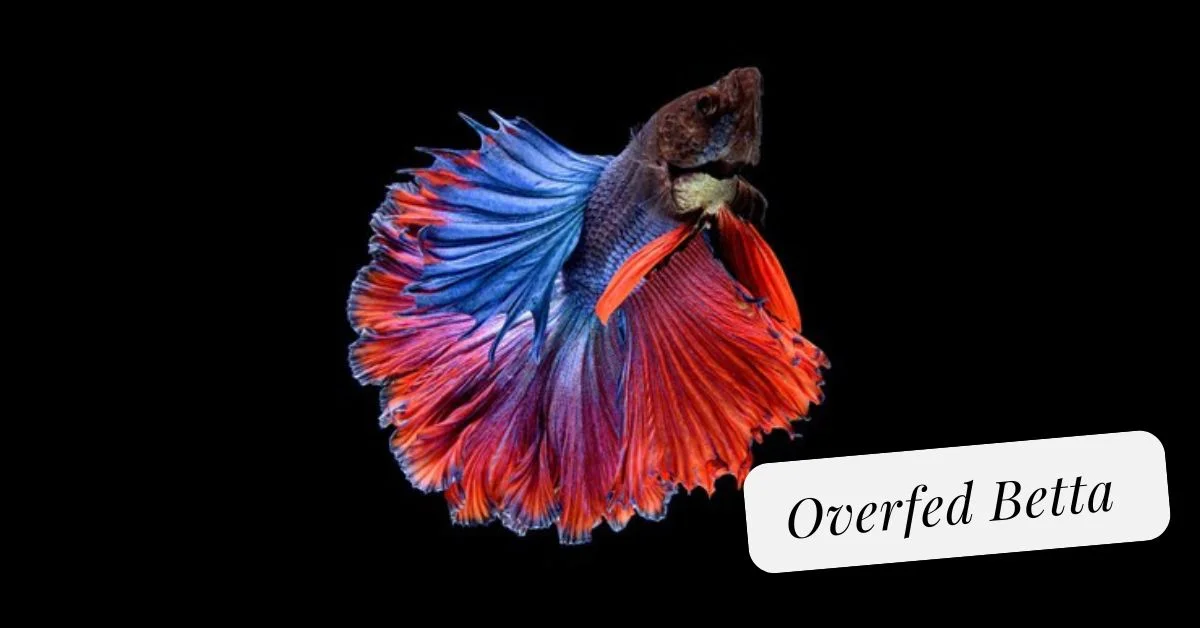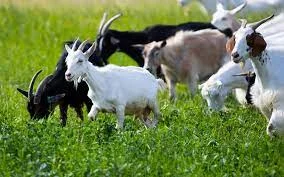Pet
The Best Features of a Bernedoodle: Traits That Make Them Irresistible

Are you ready to meet the ultimate furry companion? Look no further than the Bernedoodle – a breed that combines the intelligence and loyalty of a Poodle with the gentle and loving nature of a Bernese Mountain Dog. With their adorable looks, playful personalities, and versatile traits, it’s no wonder why Bernedoodles have captured the hearts of dog lovers everywhere. In this blog post, we’ll explore the best features of these irresistible pups, from their appearance to their temperament, living needs to health considerations. Whether you’re considering adding a new member to your family or simply curious about this captivating breed, get ready to fall head over paws for Bernedoodles!
Bernedoodle Overview
When it comes to the Bernedoodle, there’s no denying that their appearance is simply striking. These adorable dogs have a unique and eye-catching coat that can come in a variety of colors, including black, brown, or even tricolor combinations. Their fur is typically soft and curly, reminiscent of their Poodle heritage.
But it’s not just their looks that make them special – Bernedoodles also boast an incredible temperament. Known for being affectionate and gentle, they thrive on human companionship and are great with families of all ages. Whether you have children or other pets, these lovable pups will fit right into your home.
Living with a Bernedoodle is a breeze as they are highly adaptable to different environments. They can easily adjust to apartment living but will also enjoy having access to a yard where they can play and explore. Just be sure to give them plenty of exercise opportunities as well!
In terms of health considerations, Bernedoodles generally enjoy good overall health. However, like any breed, they may be prone to certain genetic conditions such as hip dysplasia or eye disorders. Regular vet check-ups along with proper diet and exercise can help keep them in tip-top shape.
As for the history behind the breed – well, it’s relatively recent! The first intentional crossbreeding between Poodles and Bernese Mountain Dogs occurred in the early 2000s with the goal of creating a hypoallergenic dog with desirable traits from both parent breeds.
Now let’s move on to some fun facts about this delightful hybrid! Did you know that Bernedoodles are often used as therapy dogs due to their calm nature? They’re also known for being intelligent and eager learners which makes training sessions enjoyable for both pup and owner.
With their irresistible charm and wonderful traits packed into one fluffy package, it’s no wonder why Bernedoodles continue to capture hearts everywhere they go! Stay tuned as we dive deeper into their specific breed traits and grooming needs in the next sections.
Appearance
The Bernedoodle is a strikingly beautiful crossbreed that combines the best features of its parent breeds, the Bernese Mountain Dog and the Poodle. These dogs have a sturdy and muscular build, with a well-balanced body structure. One of their most distinctive features is their coat, which can vary in length and texture depending on the generation and individual dog.
Bernedoodles come in different sizes, ranging from miniature to standard size. The size variation allows potential owners to find a Bernedoodle that suits their lifestyle and living arrangements. No matter what size they are, these dogs always turn heads with their adorable faces and expressive eyes.
Their coats can be curly like a Poodle’s or wavy like a Bernese Mountain Dog’s. They often inherit the classic tricolor pattern of black, white, and brown markings on their bodies, resembling that of the Bernese Mountain Dog. This unique coloration adds to their charm and makes them even more irresistible.
In terms of physical appearance, Bernedoodles are known for having soft fur that is low-shedding or hypoallergenic – perfect for those who may have allergies or prefer not to deal with excessive shedding. Their coats require regular grooming to keep them looking neat and prevent matting.
It’s safe to say that the appearance of a Bernedoodle is one of its most appealing traits. With their stunning coats and endearing expressions, these dogs are sure to capture your heart at first sight!
Temperament
Temperament is an essential aspect to consider when choosing a pet, and the Bernedoodle does not disappoint in this department. These lovable hybrids are known for their friendly and affectionate nature, making them perfect companions for individuals and families alike.
With their mixed heritage of the Bernese Mountain Dog and the Poodle, Bernedoodles inherit the best traits from both breeds. They are often described as gentle, intelligent, and highly sociable dogs. Their loving disposition makes them great with children and other pets, ensuring a harmonious household.
One of the standout qualities of Bernedoodles is their adaptability. Whether you live in a bustling city apartment or have plenty of space in the countryside, these adaptable canines will thrive in any environment. They are equally content snuggling on the couch or going on adventurous hikes – as long as they’re by your side!
Trainability is another trait that sets Bernedoodles apart. With their high intelligence levels inherited from Poodles, they quickly pick up commands and enjoy learning new tricks. Consistent positive reinforcement training methods work best with these eager-to-please pups.
While exercise needs vary among individual Bernedoodles depending on size and energy level, regular physical activity is important to keep them mentally stimulated and physically fit. Daily walks combined with playtime will help ensure a happy dog who remains calm indoors.
Living Needs
When it comes to the living needs of a Bernedoodle, there are a few key factors to consider. First and foremost, these dogs thrive in homes where they can be part of the family. They crave attention and companionship, so if you’re someone who is away from home for long periods of time or prefers a more independent pet, then a Bernedoodle may not be the best fit for you.
In addition to needing plenty of human interaction, Bernedoodles also require regular exercise to keep them happy and healthy. Daily walks or playtime in a securely fenced yard are essential to prevent boredom and destructive behaviors.
Another important aspect of their living needs is space. While Bernedoodles can adapt well to apartment living as long as they get enough exercise, having access to outdoor space where they can run around freely is ideal.
Due to their size and energy levels, it’s important that any potential hazards in your home are secured or removed entirely. This includes ensuring toxic plants are out of reach and using baby gates or other barriers if needed.
Providing a loving environment with plenty of socialization opportunities and physical activity will ensure that your Bernedoodle has all its living needs met!
Health
Health is a crucial factor to consider when choosing a pet, and the Bernedoodle certainly shines in this area. Thanks to their mixed heritage, these adorable pups tend to have fewer health issues compared to purebred dogs. However, it’s important to note that no dog breed is completely immune from health concerns.
One of the main advantages of the Bernedoodle’s mixed lineage is hybrid vigor. This means that they inherit a diverse gene pool, which can help reduce the risk of certain inherited conditions. Nonetheless, responsible breeders still prioritize genetic testing and careful selection of parent dogs to further minimize potential health problems.
Some common health issues that may affect Bernedoodles include hip dysplasia (a condition affecting the hip joint), progressive retinal atrophy (a degenerative eye disorder), and allergies. Regular veterinary check-ups are essential for early detection and prevention of any potential health concerns.
To ensure your Bernedoodle remains healthy throughout their life, providing them with proper nutrition, regular exercise, and mental stimulation is key. Additionally, maintaining good dental hygiene by brushing their teeth regularly can help prevent dental diseases.
Remember that every individual dog is unique and may have different needs or susceptibilities when it comes to their health. Consulting with your veterinarian will provide you with tailored advice based on your specific Bernedoodle companion!
History
The history of the Bernedoodle is an intriguing tale that begins with its parent breeds, the Bernese Mountain Dog and the Poodle. The Bernese Mountain Dog hails from Switzerland and was originally bred as a working dog on farms, while the Poodle has roots in Germany where it was prized for its intelligence and water-retrieving skills.
It wasn’t until fairly recently, in the early 2000s, that breeders began intentionally crossing these two breeds to create the Bernedoodle. The goal was to combine the best traits of both breeds into one amazing hybrid.
The first generation of Bernedoodles, known as F1s, were a mix of 50% Bernese Mountain Dog and 50% Poodle. These dogs exhibited a wide range of appearances and temperaments since they were crosses between two different purebred breeds.
As breeders continued to refine their breeding programs, they introduced multigenerational crosses (F2s) and even more complex combinations such as F1B or F2B Bernedoodles. This selective breeding helped establish more consistent traits among offspring, including coat type and temperament.
Today, thanks to dedicated breeders who are passionate about developing this incredible hybrid breed, the popularity of the Bernedoodle continues to soar. These dogs have captured hearts around the world with their unique looks and delightful personalities.
Fun Facts
Did you know that Bernedoodles are often referred to as “Gentle Giants”? Despite their large size, these lovable dogs have a gentle and sweet temperament that makes them great companions for families of all sizes.
Another fun fact about Bernedoodles is that they come in a variety of colors and patterns. From classic tricolors to stunning merles, each Bernedoodle has its own unique coat pattern, making them truly one-of-a-kind.
One interesting thing about Bernedoodles is their intelligence. These dogs are known for being highly trainable and eager to please their owners. They excel in obedience training and can quickly learn new commands and tricks.
If you’re looking for a dog with minimal shedding, the Bernedoodle might be the perfect choice for you! These designer dogs have a low-to-non-shedding coat, which means less time spent vacuuming up fur around your home.
Bernedoodles also have an incredible sense of loyalty towards their families. They form strong bonds with their owners and will go above and beyond to protect them if needed. Their loving nature makes them excellent therapy or emotional support animals.
In addition to their great personalities, Bernedoodles are also known for being quite athletic. They enjoy outdoor activities like hiking, swimming, or playing fetch in the park. Regular exercise is important to keep them happy and healthy.
Did you know that the first-ever intentional crossbreeding between a Poodle and a Bernese Mountain Dog was done by Sherry Rupke in 2003? This marked the beginning of breeding these wonderful hybrid dogs we now know as Berneddodles!
These fun facts only scratch the surface when it comes to learning about this amazing breed. Whether it’s their friendly demeanor or striking appearance, there’s no denying that Berneddodles are truly irresistible!
Bernedoodle Breed Traits
Bernedoodles are beloved for their charming and unique breed traits. One of the most notable aspects of Bernedoodles is their adaptability. Whether you live in a bustling city or a quiet countryside, these dogs can easily adjust to their surroundings and make themselves at home.
Another irresistible trait of Bernedoodles is their all-around friendliness. They have an innate ability to get along with just about anyone – from young children to other pets. Their friendly disposition makes them excellent family companions and social butterflies.
When it comes to training, Bernedoodles are top-notch. These intelligent dogs are eager to please their owners, making them highly trainable and obedient. With some patience and positive reinforcement, they can quickly learn commands and tricks.
Despite being friendly couch potatoes at heart, Bernedoodles do require regular exercise to keep them happy and healthy. Daily walks or playtime in the backyard will suffice for keeping these energetic pups satisfied.
Bernedoodle breed traits make them truly irresistible pets. From their adaptability to their friendliness towards everyone they meet, these dogs bring joy into any household they join. Their trainability ensures that they become well-mannered members of the family while still retaining their playful nature. So if you’re looking for a furry companion who combines intelligence with charm, look no further than the adorable Bernedoodle!
Adaptability
Adaptability is one of the standout traits that make Bernedoodles so irresistible as pets. These adorable mixed breed dogs are known for their ability to easily adapt to different living situations and environments.
Whether you live in a spacious suburban home or a cozy apartment, the Bernedoodle will fit right in. They have a flexible nature that allows them to be comfortable in various settings. This means they can thrive in both urban and rural areas, making them an excellent choice for families with diverse lifestyles.
In addition to their adaptable nature, Bernedoodles are also highly versatile when it comes to socializing with other animals and people. They tend to get along well with children, other dogs, and even cats if properly introduced. With early socialization and training, they can become friendly companions who are always ready for new adventures.
Another aspect of their adaptability is their moderate exercise needs. While they enjoy regular walks and playtime, they do not require intense physical activity like some high-energy breeds. This makes them suitable for individuals or families who may not have the time or resources for extensive exercise routines.
The adaptability of Bernedoodles makes them ideal companions for almost any household. Their easy-going nature combined with their ability to adjust quickly ensures that they can seamlessly integrate into your lifestyle without causing much disruption or stress.
All-around friendliness
When it comes to the Bernedoodle breed, one of their standout traits is their all-around friendliness. These dogs have a natural affinity for people and are known for being incredibly sociable and loving companions.
Bernedoodles are famous for their ability to get along with just about everyone they meet. Whether it’s children, other pets, or strangers on the street, these dogs have an innate charm that makes them irresistible to those around them.
Their friendly nature extends beyond just humans – Bernedoodles also tend to be good with other animals. They can easily adapt and form strong bonds with cats, rabbits, or even smaller dog breeds.
What sets Bernedoodles apart is not only their friendliness but also their intuition when it comes to understanding human emotions. Many owners report that these dogs have an uncanny ability to sense when someone is feeling down or in need of comfort. This makes them excellent therapy dogs and supportive companions for individuals going through tough times.
Whether you’re looking for a furry best friend who will greet you at the door with a wagging tail every day or seeking a dog who can bring joy and happiness into any situation, the all-around friendliness of the Bernedoodle breed makes them an ideal choice. Their warm-hearted nature combined with their intelligence and adaptability truly sets them apart from other breeds!
Trainability
Trainability is one of the standout traits of Bernedoodles that makes them irresistible to many dog owners. These intelligent and eager-to-please dogs are quick learners and excel in obedience training. With their Poodle heritage, Bernedoodles inherit the intelligence and trainability from this breed.
Thanks to their high level of intelligence, Bernedoodles can quickly grasp commands and learn new tricks. They have a natural desire to please their owners, making training sessions enjoyable for both parties involved. Whether it’s basic obedience or more advanced tasks, these dogs are up for the challenge.
Positive reinforcement methods work best when training a Bernedoodle. Reward-based techniques like treats, praise, and playtime motivate them to perform well during training sessions. Consistency is key with this breed; they thrive on routine and clear expectations.
Bernedoodles also tend to be highly trainable due to their strong bond with humans. They form close attachments to their families and aim to please them at every opportunity. This loyalty combined with their intelligence makes them receptive students during training sessions.
It’s important for Bernedoodle owners to start early socialization and obedience training with their puppies. Exposing them to different environments, people, animals, sights, sounds will help develop a confident adult dog who can adapt well in various situations.
Exercise needs
One of the best features of a Bernedoodle is their exercise needs. These dogs are energetic and active, so they require regular physical activity to stay happy and healthy.
Bernedoodles love to play and run around, making them great companions for outdoor activities like hiking or going on long walks. They have inherited their parent breeds’ love for exercise, as both the Bernese Mountain Dog and the Poodle are known for their athleticism.
To keep your Bernedoodle stimulated and prevent boredom, it’s important to provide them with plenty of exercise opportunities. This can include playing fetch in the backyard or taking them to a dog park where they can socialize with other dogs while running around freely.
Additionally, mental stimulation is also crucial for this intelligent breed. Engaging in interactive games or providing puzzle toys can help keep their minds sharp while burning off excess energy.
It’s worth noting that each individual Bernedoodle may have different exercise needs based on factors such as age, size, and overall health. Consulting with a veterinarian or professional dog trainer can help determine an appropriate exercise routine tailored specifically to your furry friend.
Remember that regular exercise not only keeps your Bernedoodle physically fit but also promotes good behavior by preventing destructive habits that may arise from pent-up energy. So lace up those walking shoes and get ready for some fun-filled adventures with your playful Bernedoodle companion!
Bernedoodle Grooming and Care
Bernedoodles are known for their adorable teddy bear appearance, and one of the factors that contribute to their charm is their luxurious coat. Grooming plays a crucial role in maintaining the health and beauty of a Bernedoodle’s coat.
To keep your Bernedoodle looking its best, regular brushing is essential. Their thick, wavy or curly fur can easily become tangled or matted if not properly cared for. Brushing at least once or twice a week will help prevent these issues and keep your pup’s coat shiny and soft.
In addition to brushing, it’s important to schedule regular grooming sessions with a professional groomer. They can trim your Bernedoodle’s hair as needed to maintain an even length and remove any excess fur. This not only helps manage shedding but also keeps them comfortable during warmer months.
While grooming is important for aesthetics, it also serves as an opportunity to check for any skin irritations or abnormalities on your dog’s body. Regular grooming sessions allow you to monitor their overall health and catch any potential issues early on.
Another aspect of care specific to Bernedoodles is proper ear cleaning. Due to their floppy ears, they are more prone to ear infections caused by moisture buildup. Cleaning the ears regularly with veterinarian-recommended products can help prevent infections and ensure optimal ear hygiene.
Don’t forget about oral hygiene! Brushing your Bernedoodle’s teeth regularly promotes good dental health, preventing gum disease and bad breath.
Coat Care
One of the most distinctive features of a Bernedoodle is its beautiful coat. These dogs have a unique mix of curly and wavy fur, which requires regular grooming to keep it looking its best.
To maintain their coat’s health and appearance, Bernedoodles need regular brushing. This helps to prevent matting and tangling, as well as remove any loose hair. It’s recommended to brush them at least once or twice a week, but during shedding seasons, more frequent brushing may be necessary.
In addition to brushing, Bernedoodles also benefit from professional grooming every few months. A professional groomer can trim their hair, clean their ears, clip their nails, and give them an overall tidy-up.
It’s important not to overlook the importance of keeping your Bernedoodle’s coat clean. Regular baths are essential to remove dirt and allergens that can irritate their skin. Be sure to use dog-friendly shampoo that won’t strip away the natural oils in their fur.
Don’t forget about maintaining good hygiene around your home! Regular vacuuming will help control shedding hair and keep your living space free from excess pet dander.
Taking care of a Bernedoodle’s coat may require some effort but trust me; it is worth it when you see how stunning they look with proper grooming maintenance! So get ready for some quality bonding time while keeping your furry friend looking fabulous!
Health and Grooming Needs
In order to keep your Bernedoodle happy and healthy, it is important to pay attention to their grooming and overall health needs. One of the best features of a Bernedoodle is their low-shedding coat, but this doesn’t mean they are completely maintenance-free. Regular brushing is essential to prevent matting and keep their fur looking its best.
When it comes to grooming, you may also need to consider professional grooming appointments every few months for a trim or shaping. This will help maintain the desired appearance of your Bernedoodle’s coat.
Aside from regular grooming, keeping up with your Bernedoodle’s health needs is crucial. Like any other dog breed, they should receive routine veterinary care including vaccinations, check-ups, and preventative treatments for parasites like fleas and ticks.
It’s also worth noting that Bernedoodles can be prone to certain health issues inherited from their parent breeds. Some common concerns include hip dysplasia, eye problems, and skin allergies. Regular vet visits can help catch any potential health issues early on.
While taking care of a Bernedoodle does require some effort in terms of grooming and healthcare responsibilities, the joy and love they bring into your life are well worth it! Their unique mix of traits makes them truly irresistible companions for individuals or families alike!
So if you’re considering adding a furry friend to your family who possesses intelligence, friendliness,and adaptability all wrapped up in an adorable package – look no further than the charming Bernepoo! Whether you live in an apartment or have ample space in a suburban home; whether you’re experienced with dogs or newbies – the versatile nature of these pups make them suitable for various lifestyles.
Pet
Overfed Betta Fish: Causes, Symptoms, and Solutions

Introduction
Understanding Betta Fish
What are Betta Fish?
Betta fish, also known as Siamese fighting fish, are native to the shallow waters of Southeast Asia. They are known for their vibrant colors and long, flowing fins. In the wild, Bettas have adapted to survive in various conditions, but in captivity, their needs must be met more precisely.
Natural Habitat and Diet
In their natural habitat, Betta fish eat a diet of insects and larvae. This diet is rich in protein and helps them maintain their health. In an aquarium, it’s important to replicate this diet as closely as possible to ensure your Betta remains healthy.
The Risks of Overfeeding
Why Overfeeding is a Concern
Overfeeding can lead to a host of problems for Betta fish. Excess food not only affects their health but also impacts the water quality in their tank. Uneaten food decomposes, leading to increased ammonia levels and potentially harmful conditions for your fish.
Impact on Health and Water Quality
When Betta fish are overfed, it can cause digestive issues and lead to poor water quality. High ammonia levels can result in stress and health problems, making it essential to monitor feeding practices closely.
Causes of Overfeeding
Overzealous Owners
Many Betta owners overfeed their fish out of a desire to ensure they are well-nourished. It’s easy to assume that more food will lead to a healthier fish, but this is a common misconception.
Misunderstanding of Feeding Needs
Another cause of overfeeding is a misunderstanding of how much food Betta fish actually need. Bettas have small stomachs and require only a small amount of food each day.
Incorrect Portion Sizes
Using the wrong portion sizes is a significant factor in overfeeding. Too much food at one time can overwhelm the fish’s digestive system and lead to health issues.
Symptoms of Overfed Betta Fish
Behavioral Changes
Overfed Bettas may exhibit changes in behavior such as lethargy or a decrease in activity levels. They might also become less responsive during feeding times.
Physical Signs
Physically, an overfed Betta might appear bloated or have a distended abdomen. These signs indicate that the fish’s digestive system is struggling to cope with the excess food.
Water Quality Indicators
Poor water quality can also signal overfeeding. If you notice an increase in algae growth or a strong odor coming from the tank, it might be due to decomposing food.
Impact on Health
Digestive Issues
Overfeeding can cause digestive problems such as constipation or swim bladder issues. These conditions can lead to more severe health problems if not addressed promptly.
Obesity and Related Diseases
Just like in other animals, obesity in Betta fish can lead to a range of health issues, including a weakened immune system and reduced lifespan.
Stress and Lethargy
Excess food can stress your Betta, leading to a decrease in energy levels and overall well-being. Stress can also make your Betta more susceptible to diseases.
Diagnosing Overfeeding Issues
How to Assess if Your Betta is Overfed
To determine if your Betta is overfed, look for signs of bloating and monitor their activity levels. Regularly check the tank for uneaten food and assess the water quality.
Tools and Techniques for Monitoring
Using a fish tank test kit can help you keep track of water quality. Additionally, maintaining a feeding log can help you monitor how much and how often you feed your Betta.
Preventing Overfeeding
Proper Feeding Guidelines
Feed your Betta a small amount of high-quality food once or twice a day. It’s essential to provide just enough for them to consume within a few minutes to avoid leftovers.
Establishing a Feeding Schedule
Create a consistent feeding schedule and stick to it. This will help regulate your Betta’s food intake and prevent overfeeding.
Measuring Food Portions
Use a measuring spoon to ensure you’re providing the correct amount of food. This can help you avoid the temptation to overfeed and ensure your Betta receives the right nutrition.
Solutions for Overfed Betta Fish
Adjusting Feeding Habits
If you suspect your Betta is overfed, adjust the amount and frequency of food. Gradually reduce the amount of food you offer until you find the right balance.
Water Changes and Tank Maintenance
Perform regular water changes to maintain a healthy environment for your Betta. Cleaning the tank and removing uneaten food can help improve water quality.
Veterinary Intervention if Needed
If your Betta shows signs of persistent health issues despite changes in feeding habits, consult a veterinarian specializing in fish care.
Long-Term Care for Betta Fish
Maintaining a Healthy Diet
Continue to provide a balanced diet and monitor your Betta’s health regularly. A healthy diet is crucial for their long-term well-being.
Regular Health Check-Ups
Schedule regular check-ups to ensure your Betta remains in good health. This can help catch any issues early and maintain optimal conditions for your fish.
Environmental Enrichment
Provide environmental enrichment such as plants and hiding spots to keep your Betta active and engaged. A stimulating environment contributes to overall health and happiness.
Common Mistakes to Avoid
Misinterpreting Betta Behavior
Avoid misinterpreting changes in behavior as a sign of hunger. Monitor feeding closely and adjust based on actual needs rather than perceived hunger.
Ignoring Water Quality
Don’t overlook the importance of maintaining water quality. Regular testing and maintenance are essential for a healthy tank environment.
Not Monitoring Food Intake
Ensure you keep track of how much and how often you feed your Betta. Overfeeding can be a gradual issue, so consistent monitoring is key.
Benefits of Proper Feeding
Improved Health and Longevity
Proper feeding practices contribute to a healthier and longer life for your Betta. A balanced diet helps prevent diseases and supports overall well-being.
Enhanced Behavior and Activity
Betta fish that are fed appropriately are more active and exhibit better behavior. They are more likely to thrive and show their vibrant colors.
Better Water Quality
Feeding the right amount reduces waste and helps maintain better water quality, creating a healthier environment for your Betta and other tank inhabitants.
Conclusion
In conclusion, overfeeding is a common issue among Betta fish owners that can lead to serious health problems and poor water quality. By understanding the causes and symptoms of overfeeding, you can take steps to prevent and address this issue effectively. Proper feeding practices, regular tank maintenance, and monitoring are crucial for ensuring your Betta remains healthy and vibrant.
FAQs
What is the best feeding schedule for Betta fish?
The best feeding schedule for Betta fish is once or twice a day. Provide only a small amount of food that your Betta can consume within a few minutes.
How can I tell if my Betta is overweight?
Signs of an overweight Betta include a bloated abdomen and decreased activity levels. Monitoring their feeding and behavior can help you identify weight issues.
What should I do if my Betta refuses to eat?
If your Betta refuses to eat, check for changes in water quality or health issues. Ensure the food is fresh and appropriate for their diet.
How often should I clean my Betta’s tank?
Clean your Betta’s tank regularly, typically once a week. Perform partial water changes and remove uneaten food to maintain a healthy environment.
Can overfeeding affect the tank’s other inhabitants?
Yes, overfeeding can lead to poor water quality, which can negatively impact other tank inhabitants. Maintaining good feeding practices benefits all the fish in the tank.
Pet
Outdoor Pets: Fun and Friendly Animals to Keep Outside

Introduction
Keeping pets is a wonderful experience for kids and adults alike. However, not everyone has the permission or space to keep pets indoors. This is where outdoor pets come in handy. They provide the same companionship and joy while thriving in an outdoor environment. Let’s explore the best outdoor pets and how to care for them.
Factors to Consider When Choosing Outdoor Pets
Climate and Environment
The climate and environment where you live play a significant role in determining which pets are suitable for outdoor living. Some animals thrive in warm climates, while others prefer cooler temperatures.
Space Requirements
Different pets have varying space needs. While some animals, like rabbits and guinea pigs, require relatively small enclosures, others, like goats and dogs, need more extensive spaces to roam and play.
Maintenance and Care
Consider the amount of time and effort you can dedicate to maintaining your pet’s living environment. Some outdoor pets require more frequent cleaning and care than others.
Safety Concerns
Ensuring the safety of your outdoor pets from predators and harsh weather conditions is crucial. Proper enclosures and shelters are necessary to keep them safe and healthy.
Top 10 Best Outdoor Pets for Kids
1. Rabbits

Habitat and Housing: Rabbits need a secure hutch with enough space to move around. The hutch should be well-ventilated and protected from predators and extreme weather.
Feeding and Care: They thrive on a diet of hay, fresh vegetables, and rabbit pellets. Regular cleaning of their living space is essential to prevent diseases.
2. Chickens

Coop Requirements: Chickens require a coop that provides shelter from the elements and protection from predators. The coop should have nesting boxes for egg-laying.
Egg Production and Benefits: Chickens are not only fun to watch but also provide fresh eggs. They help teach kids responsibility and the basics of animal care.
3. Ducks

Pond or Water Source: Ducks need access to a water source, such as a pond or a small pool, to swim and clean themselves.
Social Nature and Care: Ducks are social animals that enjoy the company of other ducks. They need a balanced diet of grains, vegetables, and commercial duck feed.
4. Guinea Pigs

Outdoor Housing: Guinea pigs can live outdoors in a secure, weather-proof enclosure with ample space for exercise.
Social Interaction: They are social creatures and do well in pairs or small groups. Guinea pigs require fresh hay, vegetables, and guinea pig pellets.
5. Tortoises

Enclosure and Diet: Tortoises need a spacious outdoor enclosure with access to sunlight and shade. Their diet includes leafy greens, vegetables, and occasional fruits.
Lifespan and Commitment: Tortoises have long lifespans, often exceeding 50 years, making them a long-term commitment.
6. Goats
Space and Shelter Needs: Goats require a large, secure area to roam and graze. They also need a sturdy shelter to protect them from the elements.
Playful Nature: Goats are playful and curious animals that can provide endless entertainment. They require a diet of hay, grains, and fresh vegetables.
7. Pigeons

Loft Setup: Pigeons need a loft or aviary to live in. The space should be safe from predators and have perches for the pigeons to rest.
Feeding and Breeding: They eat grains and seeds. Pigeons are also known for their breeding habits and can be a fascinating pet for kids to observe.
8. Fish (Pond)

Pond Setup and Maintenance: A garden pond can house various fish species like koi or goldfish. The pond needs regular maintenance to keep the water clean and oxygenated.
Suitable Fish Species: Choose fish that are hardy and can adapt to outdoor pond conditions. Koi and goldfish are popular choices.
9. Dogs

Suitable Breeds for Outdoor Living: Some dog breeds are better suited for outdoor living, such as Labrador Retrievers, Siberian Huskies, and German Shepherds.
Training and Exercise: Outdoor dogs need regular exercise and training to stay healthy and happy. Ensure they have a safe, fenced area to roam.
10. Cats

Safe Outdoor Environment: Cats can enjoy the outdoors if provided with a safe environment. Consider building a catio or a secure outdoor enclosure.
Health and Safety: Regular vet check-ups and vaccinations are essential to keep outdoor cats healthy. Provide them with fresh water, food, and shelter.
Special Considerations for Outdoor Pets
Predators and Protection
Ensure that your outdoor pets are protected from predators such as foxes, hawks, and neighborhood dogs. Secure enclosures and shelters are vital.
Seasonal Changes and Adaptation
Outdoor pets need to adapt to seasonal changes. Provide appropriate shelter and heating in winter and shade and water in summer.
Health and Veterinary Care
Regular health check-ups and vaccinations are crucial for outdoor pets. Monitor them for any signs of illness or distress.
Conclusion
Outdoor pets offer numerous benefits, from teaching kids responsibility to providing companionship and entertainment. By choosing the right pet and providing proper care, you can ensure a happy and healthy environment for your outdoor animals. Whether you opt for a playful goat or a serene tortoise, outdoor pets can enrich your family’s life in countless ways.
FAQs
What are the best low-maintenance outdoor pets?
Rabbits, guinea pigs, and tortoises are relatively low-maintenance outdoor pets that are easy to care for.
How can I protect my outdoor pets from predators?
Use secure enclosures and provide shelters that protect your pets from predators like foxes and hawks. Regularly inspect the enclosures for any vulnerabilities.
What should I consider when setting up an outdoor pet enclosure?
Consider the space requirements, protection from predators, and shelter from weather conditions. Ensure the enclosure is safe, secure, and appropriate for the pet’s needs.
Can outdoor pets live outside all year round?
Many outdoor pets can live outside year-round with proper shelter and care. However, extreme weather conditions may require additional precautions to ensure their safety and comfort.
How do I ensure my outdoor pet stays healthy?
Regular vet check-ups, a balanced diet, clean water, and a safe living environment are essential for maintaining the health of your outdoor pet.
Pet
Can Hamsters Eat Avocado? A Comprehensive Guide

Introduction
Hamsters are adorable, small pets that bring joy to many households. Ensuring they have a healthy diet is essential for their well-being. A common question among hamster owners is: Can hamsters eat avocado? This guide will delve into the details of avocado consumption for hamsters, including its benefits, risks, and safer alternatives. Let’s get started!

Nutritional Profile of Avocado
Avocados are known for their rich nutritional content, making them a popular choice in human diets. They are packed with vitamins, minerals, and healthy fats.
Vitamins and Minerals in Avocado
Avocados contain essential vitamins such as A, C, E, and K. They also provide minerals like potassium, magnesium, and folate. These nutrients are beneficial for humans but can be problematic for hamsters.
Fats and Oils in Avocado
While the fats in avocados are healthy for humans, they are not suitable for hamsters. The high-fat content can lead to obesity and other health issues in these small pets.
Can Hamsters Eat Avocado?
The straightforward answer is no; hamsters should not eat avocado. Although avocados are nutritious for humans, they pose several risks to hamsters.
Toxic Components of Avocado
Avocados contain a substance called persin, which is toxic to many animals, including hamsters. Persin can cause serious health issues, ranging from digestive problems to more severe complications.
Symptoms of Avocado Toxicity in Hamsters
If a hamster ingests avocado, it may exhibit symptoms like diarrhea, vomiting, lethargy, and difficulty breathing. Immediate veterinary attention is crucial if these symptoms occur.
Safe Alternatives to Avocado for Hamsters
Instead of feeding avocados to your hamster, consider safer fruit and vegetable options that provide similar nutritional benefits without the risks.
Fruits Safe for Hamsters
Hamsters can enjoy fruits like apples (without seeds), bananas, strawberries, and blueberries. These fruits are low in fat and provide essential vitamins and minerals.
Vegetables Safe for Hamsters
Vegetables such as carrots, cucumbers, and bell peppers are excellent choices for hamsters. They are nutrient-dense and safe for your furry friend to consume.
How to Introduce New Foods to Hamsters
When introducing new foods to your hamster’s diet, it’s essential to do so gradually and monitor their reaction.
Steps to Safely Introduce New Foods
Start by offering a small piece of the new food and observe your hamster for any adverse reactions. If the hamster tolerates it well, you can slowly increase the portion size.
Monitoring Hamster Reactions
Watch for any signs of discomfort or allergic reactions, such as changes in behavior, appetite, or stool. If any adverse reactions occur, discontinue the new food immediately.
Signs of a Healthy Hamster Diet
A balanced diet is crucial for a hamster’s health. Here are some indicators that your hamster is eating well.
Indicators of a Balanced Diet
A healthy hamster diet includes a mix of commercial hamster pellets, fresh fruits and vegetables, and occasional treats. Your hamster should be active, have a shiny coat, and maintain a stable weight.
Common Dietary Pitfalls to Avoid
Avoid feeding your hamster foods that are high in fat, sugar, or harmful substances. Foods like avocado, chocolate, and sugary treats should be strictly avoided.
What to Do If Your Hamster Eats Avocado
Accidents happen, and if your hamster accidentally eats avocado, it’s essential to act quickly.
Immediate Steps to Take
Remove any remaining avocado pieces from the hamster’s cage and contact your veterinarian immediately. Provide details on the amount consumed and any symptoms your hamster is showing.
When to Contact a Vet
If your hamster shows signs of avocado toxicity, such as lethargy, vomiting, or difficulty breathing, seek veterinary assistance immediately. Early intervention can prevent severe health issues.
Consulting with a Veterinarian
For any concerns regarding your hamster’s diet, always consult with a veterinarian. They can provide tailored advice to ensure your pet’s health and well-being.
Importance of Professional Advice
Veterinarians have the expertise to guide you in creating a balanced and safe diet for your hamster. Regular check-ups ensure your pet remains healthy and happy.
Questions to Ask Your Vet
When visiting your vet, ask about safe foods for hamsters, signs of dietary issues, and emergency protocols if your hamster consumes something harmful.
Conclusion
While avocados are nutritious for humans, they are not safe for hamsters. The risks of feeding avocados to your hamster far outweigh any potential benefits. Instead, opt for safer alternatives like apples, carrots, and other hamster-friendly foods. Always consult with a veterinarian for the best dietary advice and ensure your hamster enjoys a balanced and healthy diet.
FAQs
Can hamsters eat other exotic fruits?
No, many exotic fruits can be harmful to hamsters due to their unique dietary needs. Stick to safe, commonly known fruits like apples and strawberries.
What vegetables are best for hamsters?
Hamsters can safely eat vegetables like carrots, cucumbers, and bell peppers. These provide essential nutrients without the risks associated with more exotic options.
How often should I feed my hamster fresh food?
Fresh fruits and vegetables should be given in moderation, about 2-3 times a week, in small amounts to prevent any digestive issues.
Are there any fruits that are particularly dangerous for hamsters?
Yes, avoid feeding your hamster fruits like citrus, grapes, and avocados as they can be toxic and cause severe health problems.
How can I ensure my hamster’s diet is balanced?
Provide a mix of commercial hamster pellets, fresh fruits and vegetables, and occasional treats. Regularly consult with your vet to adjust the diet as needed.
-

 Fashion2 years ago
Fashion2 years agoExploring Purenudism: Embracing Body Positivity and Freedom
-

 Shops1 year ago
Shops1 year agoStaples Store Hours: What Time Does Staples Open And Close?
-

 Shops2 years ago
Shops2 years agoWalmart Vision Center Hours
-

 Shops1 year ago
Shops1 year agoWalgreen Pharmacy Hours: What Time Does It Open & Close?
-

 Shops1 year ago
Shops1 year agoPublix Pharmacy Hours and Locations
-

 Entertainment2 years ago
Entertainment2 years agoThothub.lol: The Digital Realm of Entertainment
-

 Business2 years ago
Business2 years agoDesigner Clothing: Making a Statement
-

 Shops1 year ago
Shops1 year agoWalmart Deli Open & Close Hours

